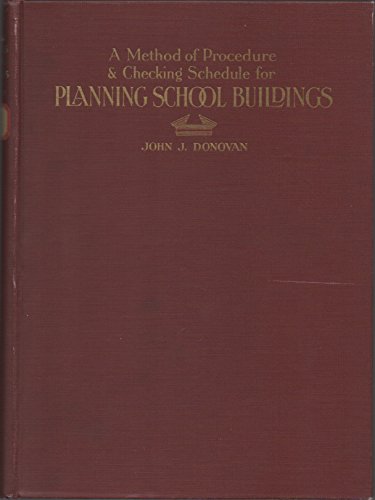Background
Donovan was born on September 8, 1858 at Rumney, New Hampshire. He was the eldest of seven children of Irish immigrant parents, Patrick Donovan, a railroad construction foreman, and Julia (O'Sullivan) Donovan.

(NY 1932 1st Bruce. 4to., 361pp., hardcover Good plus, lig...)
NY 1932 1st Bruce. 4to., 361pp., hardcover Good plus, light spotting and soiling on cover, no DJ.
https://www.amazon.com/PROCEDURE-CHECKING-SCHEDULE-BUILDINGS-EQUIPMENT/dp/B004VJHQRQ?SubscriptionId=AKIAJRRWTH346WSPOAFQ&tag=prabook-20&linkCode=sp1&camp=2025&creative=165953&creativeASIN=B004VJHQRQ
Donovan was born on September 8, 1858 at Rumney, New Hampshire. He was the eldest of seven children of Irish immigrant parents, Patrick Donovan, a railroad construction foreman, and Julia (O'Sullivan) Donovan.
Though Donovan graduated from the Plymouth (New Hampshire) State Normal School in 1877, he had grown up with an ambition to build railroads. While teaching in New England schools, he studied at the Worcester Polytechnic Institute, where he obtained the degree of B. S. in civil engineering in 1882. Donovan was awarded the degree of D. Sc. by his alma mater, Worcester Polytechnic Institute, in 1932.
When the Northern Pacific Railroad asked the Institute for two trained engineers for work on its transcontinental lines, Donovan was one of those selected. He started as rodman on a surveying crew but in six months. He was assistant engineer on construction. In June 1887 the Northern Pacific pushed through to the coast, and Donovan took charge of the western half of the Cascade Division.
In 1888 Donovan settled at Fair Haven, the new and bustling settlement on Bellingham Bay in northwestern Washington, where he became associated with the Fair Haven Land Company, the Skagit Coal and Transportation Company, and the Fair Haven and Southern Railroad. A community leader, he platted the city of Fair Haven, which later became part of Bellingham, laid out its docks, opened coal mines on the Skagit River, and supervised the building of a railroad connection with the Northern Pacific. It was a time of keen rivalry to obtain the most favorable outlets to the Pacific, and he helped to bring about various extensions and consolidations so that the other two transcontinental giants, the Great Northern and the Chicago, Milwaukee & St. Paul, also acquired lines into Bellingham, Donovan serving as chief engineer in each instance.
After 1896 Donovan's active, exploring mind turned to the vast forests which surrounded Bellingham Bay. He became associated with J. H. Bloedel, vice-president of the Fair Haven National Bank, and for six years these partners pioneered in the hauling of logs from camps on Lake Whatcom for sale to mills on the tidewater.
In 1898 a third man joined the group, Peter Larsen, one of the ablest railroad men in the whole Pacific Northwest. They made an unbeatable team, with Larsen and Donovan as engineers and Bloedel as financier and salesman. The group was incorporatedin 1913 as Bloedel-Donovan Lumber Mills and began its long career as one of the largest and best-known lumber manufacturers in the Douglas fir region. In addition to extensive timber purchases east of Bellingham Bay, the company bought an enormous holding on the Olympic Peninsula in 1920, becoming the third largest producer of lumber and shingles in the United States, with a far-flung sales organization. It pursued an open-shop labor policy, adopting the eight-hour day in 1918 and providing industrial insurance for all workers.
In 1924 he was a president of the Washington Good Roads Association. He served also as chairman of the State Commission on Forest Legislation, which did laudable service in strengthening the forest fire code of Washington.
He died on January 9, 1937, in Bellingham, Washington.
(NY 1932 1st Bruce. 4to., 361pp., hardcover Good plus, lig...)
Donovan was a member of the First and Second Council, Fairhaven, Washington; and a charter member of State Conservation Association. Among other things he was a trustee of the Bellingham State Normal School; a member of State Board of Charities and Correction; an adviser of M. Joseph's Hospital; a member of National Municipal League, National Child Labor Committee, Knights of Columbus; past president of Bellingham Chamber of Commerce; vice-president of Washington Good Roads Association; and president of Twentieth Century and New England Clubs.
Donovan's warm, friendly personality drew him into many industrial and civic organizations.
In 1888 Donovan, with his bride, Clara Isabel Nichols, settled at Fair Haven. His older son followed closely in his footsteps as railroad engineer and logger.
